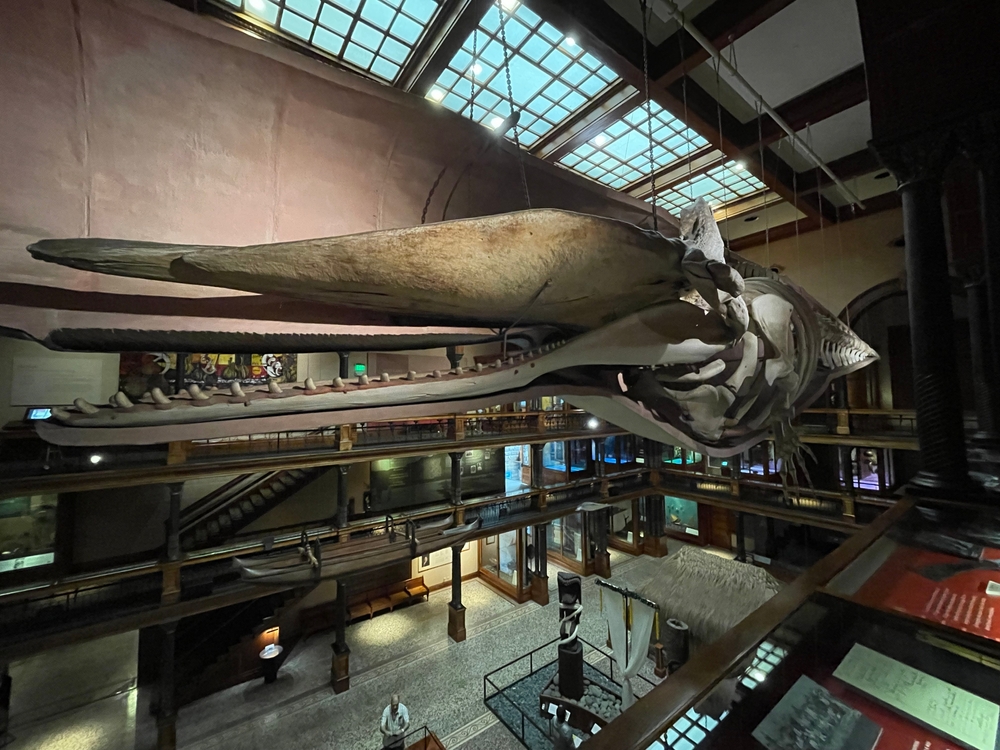The Bishop Museum, formally known as the Bernice Pauahi Bishop Museum, is located in Honolulu, Hawaii, and is the largest museum in the state. It is also considered the premier natural and cultural history institution in the Pacific, dedicated to preserving the history of Hawaii and its surrounding regions.
Founding and Purpose
The museum was founded in 1889 by Charles Reed Bishop in memory of his late wife, Princess Bernice Pauahi Bishop, the last descendant of the royal Kamehameha family. It was established to house the extensive collection of Hawaiian artifacts and royal family heirlooms of the Kamehamehas, thereby preserving the cultural heritage of Hawaii.
Collections and Exhibits
The Bishop Museum’s collections encompass millions of artifacts, documents, and photographs about Hawaii and other Pacific island cultures. It is renowned for its:
- Hawaiian Hall: A three-story building showcasing Hawaiian history, culture, and spirituality. The hall’s exhibits include feather cloaks, wooden images, and a range of other artifacts significant to Hawaiian heritage.
- Pacific Hall: A gallery focusing on the broader Pacific Islands, illustrating the diverse cultures and peoples of Polynesia, Micronesia, and Melanesia.
- Science Adventure Center: An interactive exhibit area that highlights the natural environment of Hawaii, from its volcanic origins to its unique ecosystems.
- Richard T. Mamiya Science Adventure Center: A place where visitors can learn about volcanology, oceanography, and the biodiversity of the Pacific through hands-on exhibits and displays.
- Jhamandas Watumull Planetarium: The planetarium offers educational shows about the stars, navigation, and the importance of astronomy in Hawaiian culture.
Research and Education
The Bishop Museum is not only a place of public exhibition but also a center for research and education. Scientists at the museum conduct research in a variety of fields, including anthropology, archaeology, entomology, botany, and ichthyology. The museum’s extensive archives and library support researchers from around the world.
Educational Programs and Community Engagement
The museum runs a wide range of educational programs aimed at school groups, families, and lifelong learners. These programs often include workshops, lectures, and demonstrations that help to engage the community with the rich cultural and natural heritage of Hawaii.
Conservation Efforts
In its role as a steward of cultural and natural history, the Bishop Museum is deeply involved in conservation efforts. It works to preserve both tangible and intangible cultural heritage, including the Hawaiian language, traditional practices, and endemic species conservation.
Visitor Experience
A visit to the Bishop Museum is a journey through the history and culture of Hawaii and the Pacific. Exhibits are designed to be immersive, providing a rich sensory experience that includes authentic sights, sounds, and even smells. The museum’s campus also features beautiful Hawaiian flora, further immersing visitors in the environment of the islands.
Conclusion
The Bishop Museum serves as a treasure trove of the Pacific, safeguarding the artifacts and stories of Hawaii, and presenting them to the world. It offers a profound look into the past while educating for the future, ensuring that the legacy of the Pacific’s diverse cultures and natural wonders are preserved for generations to come. Whether you are a resident, a researcher, or a visitor, the museum provides an invaluable insight into the cultural heart and scientific richness of Hawaii.









